Abductor (2006).
Two examples from this gallery selection. There’s more at White Cube.
Halo of Flies (2006).
Previously on { feuilleton }
• Yoshitaka Amano in Berlin
• Visions and the art of Nick Hyde
• AVAF at Mao Mag
A journal by artist and designer John Coulthart.
Psychedelia
Abductor (2006).
Two examples from this gallery selection. There’s more at White Cube.
Halo of Flies (2006).
Previously on { feuilleton }
• Yoshitaka Amano in Berlin
• Visions and the art of Nick Hyde
• AVAF at Mao Mag
Oz #45, November 1972.
This large-format issue of Oz magazine with John Hurford’s cover was one of the last published and is also one of the few issues I own. Hurford provided many interior illustrations for Oz and other magazines, as well as producing poster art and other graphics. Unlike many artists of the period he’s still active and has his own site with examples of recent work. For more Oz covers, go here.
Elsewhere on { feuilleton }
• The illustrators archive
Previously on { feuilleton }
• The art of Bertrand
• Barney Bubbles: artist and designer
• Oz magazine, 1967–73
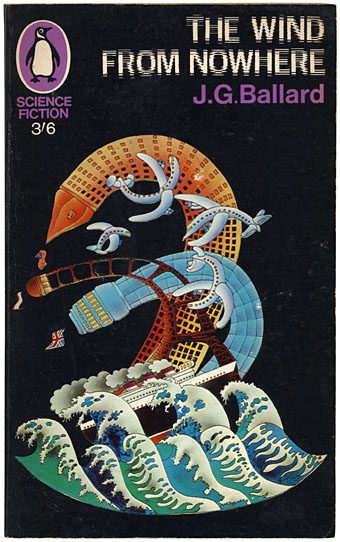
I’ve never been all that keen on Alan Aldridge‘s brand of psychedelic art but it’s worth noting here the (London) Design Museum retrospective which runs from 10 October to 25 January, 2009. Aldridge’s work as a designer and illustrator for Penguin Books in the Sixties impresses me more than his subsequent illustrated Beatles lyrics and The Butterfly Ball and the Grasshopper Feast (1973), a pair of books which seemed ubiquitous in the 1970s. Flickr has a decent selection of his book covers which included a run of sf paperbacks in 1967. Ballard’s The Wind from Nowhere is the very slight debut novel which the author prefers to forget. Where Ballard in Penguin is concerned, David Pelham’s work a few years later was a far more suitable match.
Seeing Aldridge honoured with a big retrospective make me wonder why Roger Dean hasn’t yet been given the same accolade. Dean for me is by far the better artist in terms of distinctive and memorable imagery; he’s also a better draughtsman and far more imaginative designer (not to mention having always been a speculative architect). I suspect Dean’s reputation is still blighted by his associations with Yes and the general antipathy which that band’s name generates in a certain middle-aged sector of Britain’s cultural commentariat. Ballard’s name was equally blighted in literary circles by his science fiction associations and it was Barcelona, not London, which honoured him with a major exhibition recently. There may be some home-grown reappraisals in the offing but I won’t hold my breath.
Elsewhere on { feuilleton }
• The book covers archive
• The illustrators archive
Previously on { feuilleton }
• Ballard in Barcelona
• The New Love Poetry
• Penguin Labyrinths and the Thief’s Journal
• Penguin designer David Pelham talks
• Barney Bubbles: artist and designer

Rick Wright in 1971.
As has been noted nearly everywhere by now, Pink Floyd keyboardist Rick Wright went to the Great Gig in the Sky earlier this week, and I’m sure the inevitability of using the title of his most famous composition in this way wouldn’t have surprised him. I may as well note here that he was always credited as Rick on the albums following Piper at the Gates of Dawn, not Richard. I saw Pink Floyd perform The Wall in the cavernous bounds of Earl’s Court, London in August 1980 so I suppose I can claim to have seen him play, if watching a speck on a distant stage counts as seeing anyone. Wright’s falling out with the increasingly fractious Roger Waters saw him treated as a session musician by that point and while the show was impressively bombastic I can’t bear to hear that dreary and hysterical album any more. (Unless it’s Scissor Sisters covering Comfortably Numb.) Far better to remember Wright for his psychedelic songs such as Remember A Day from A Saucerful of Secrets.
Update: Thom reminds me that French musician Hector Zazou also died earlier this month.
Dilettantes by You Am I (2008). Illustration and design by Ken Taylor.
Dilettantes is the eighth studio album from Australian band You Am I which is released this week sporting a very creditable Beardsley pastiche by illustrator Ken Taylor. Sleevage has more details about the creation of the CD package, including preliminary sketches. Those familiar with Beardsley’s work may see in the cover drawing references to The Peacock Skirt and the colour print of Isolde. I like the way Beardsley’s peacock has been exchanged for a more suitably antipodean lyrebird. This isn’t Beardsley’s only influence in the musical world, of course. A few more examples follow.
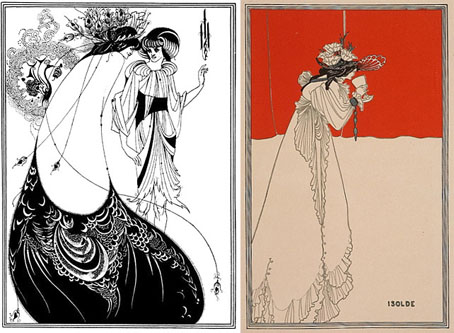
left: The Peacock Skirt from Salomé (1894); right: Isolde (1895).
Revolver cover by Klaus Voorman (1966).
The over-familiarity of Klaus Voorman‘s collage/drawing for the cover of Revolver by The Beatles tends to obscure its Beardsley influence but that influence is certainly present in the stylised faces, the figure details and the rendering of the hair. The Beatles themselves were enthused enough with Aubrey to put his face among the pantheon of “people that we like” on the sleeve of Sgt. Pepper a year later. I’d thought for a while that Voorman might have been inspired by the landmark Beardsley exhibition which ran at the V&A in London from May–September 1966. Some correspondence with Raymond Newman, author of Abracadabra, a book about the album, disabused me of that when Raymond confirmed that Voorman in 1966 had already been a Beardsley enthusiast for a number of years.
As well as being possibly the first Beardsleyesque album cover, I wonder whether this was also the first major album release to drop the name of the artist from the front of the sleeve.
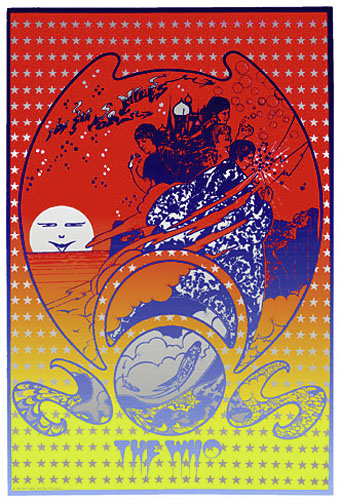
Everyone went psychedelic in 1967, even tough mods like The Who. This Hapshash and the Coloured Coat promo poster for I Can See For Miles (incidentally my favourite Who song) is one of Hapshash’s more overt Beardsley borrowings. The sun (or moon) in the background is a variation on Beardsley’s The Woman in the Moon from Salomé (the face is Oscar Wilde’s) while Pete Townshend’s florid sorcerer’s cloak owes much to Aubrey’s incredible cover design (blocked in gold on the book) for Volpone.
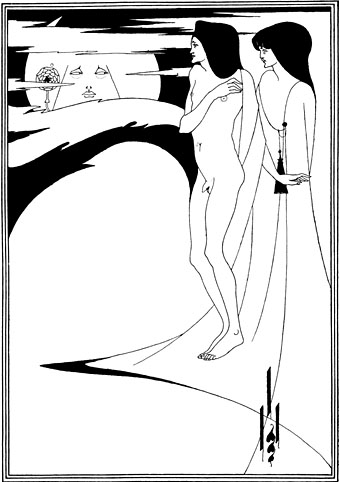
The Woman in the Moon (1894).
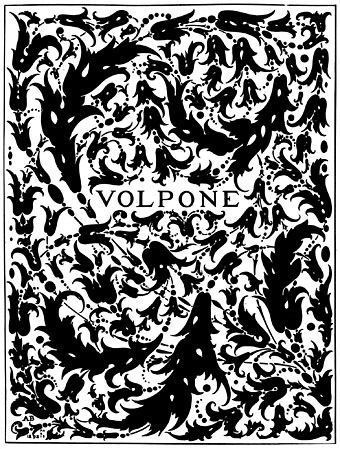
Volpone (1897).

From the sublime to the ridiculous. Cathy Berberian was the mezzo-soprano wife of avant garde composer Luciano Berio, with a long career as a singer of serious classical and contemporary classical works. Her rendition of Berio’s Thema (Omaggio a Joyce)–an electroacoustic setting of the “Sirens” prelude from Ulysses–was one of the tracks on the 1967 electroacoustic compilation Electronic Music III discussed here in April. She also had a separate career as an operatic interpreter of pop music and this collection of Beatles songs dates either from 1968 or 69, depending on which source you choose to believe. Whatever the year, the designer pulled off a decent enough copy of the Revolver sleeve. For a taste of the Berberian style, there’s a sample here. And if you’re desperate for the entire album, this page has a copy.
I’m sure this doesn’t exhaust the Beardsley influence in sleeve design, there must be others between 1968 and 2008. Once again, if you know of any further examples, please leave a comment.
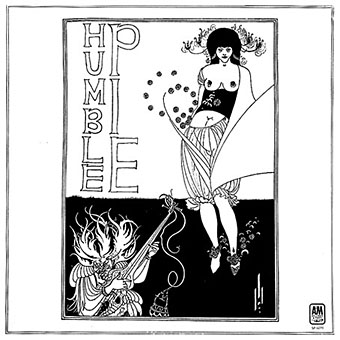
Humble Pie by Humble Pie (1970).
Update: Added Humble Pie’s self-titled third album. The illustration this time is Beardsley’s own, The Stomach Dance from Salomé.
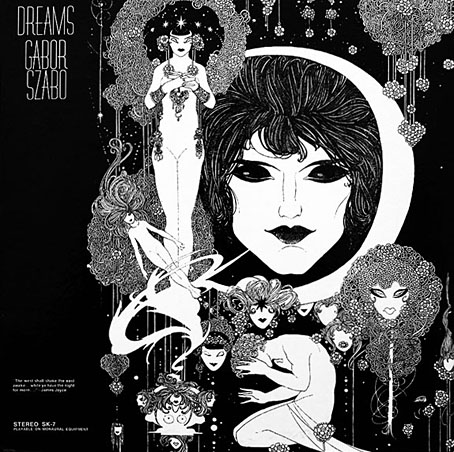
Dreams by Gabor Szabo (1968). Design by David Stahlberg.
Update 2: Therese discovered this great sleeve for an album by the Hungarian jazz guitarist. Closer in style to John Austen’s illustrations for Hamlet 1922) but Austen’s use of black-and-white at the time was very influenced by Beardsley’s work.
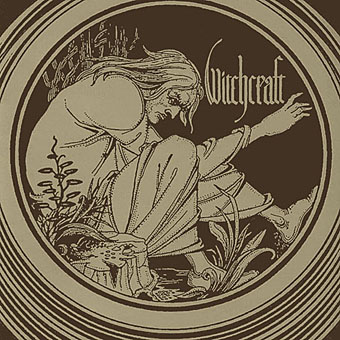
Witchcraft by Witchcraft (2004).
Update 3: Another addition, the debut album from Swedish metal band Witchcraft which uses Beardsley’s Merlin vignette from the Morte Darthur. Thanks to Cyphane for the tip.
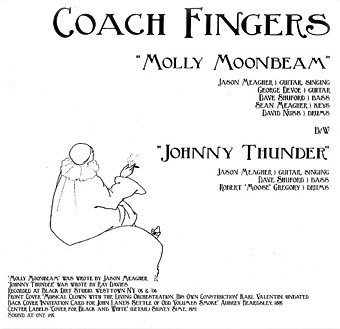
Molly Moonbeam by Coach Fingers (2007).
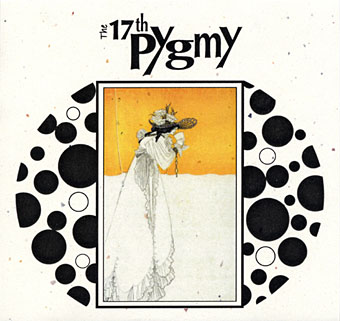
Ballade Of Tristram’s Last Harping by The 17th Pygmy (aka 17 Pygmies) (2007).
Update 4: Added a couple of new discoveries. The 17th Pygmy album apparently includes further Beardsley pieces in its booklet while the Coach Fingers single also has a label featuring designs by Beardsley’s contemporary, Sidney Sime.
La Beale Isoud at Joyous Gard. (1894).

Come Hell Or High Water by The Flowers of Hell (2009).
Update 5: Added the Flowers of Hell cover which is based on La Beale Isoud at Joyous Gard. from Le Morte Darthur. The band also has a video which works variations on the same picture.
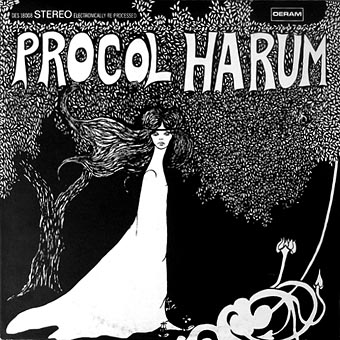
Procol Harum by Procol Harum (1967).
Update 6: Another one I’d missed, Procol Harum’s debut album doesn’t have a credit for the cover art which is perhaps just as well since it doesn’t stand comparison with some of the works above. The same artwork appeared on later reissues when the album was re-titled A Whiter Shade of Pale.
Elsewhere on { feuilleton }
• The album covers archive
• The Aubrey Beardsley archive
• The illustrators archive